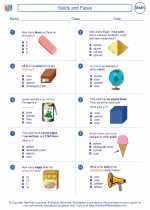Precipitation
Precipitation refers to any form of water, liquid or solid, that falls from the atmosphere and reaches the ground. This includes rain, snow, sleet, and hail. Precipitation is a key part of the Earth's water cycle, playing a crucial role in replenishing the planet's freshwater supply.
Types of Precipitation
There are several types of precipitation:
- Rain: Liquid water droplets that fall from the sky when the temperature is above freezing.
- Snow: Ice crystals that fall from the sky when the temperature is below freezing.
- Sleet: Small ice pellets that form when raindrops freeze before reaching the ground.
- Hail: Large ice pellets that form within strong thunderstorms and can cause damage to property.
Formation of Precipitation
Precipitation forms when water vapor in the atmosphere condenses into water droplets or ice crystals, which then become heavy enough to fall to the ground. This process often occurs within clouds as air rises, cools, and the water vapor condenses around tiny particles, such as dust or pollutants, to form cloud droplets. Eventually, these droplets grow in size and fall as precipitation when they become too heavy to be held aloft by the air currents.
Measurement of Precipitation
Precipitation is measured using a variety of instruments, including rain gauges and snow measurement devices. The amount of precipitation that falls over a specific area and time period is expressed in inches or millimeters, and is an important factor in understanding local climate patterns and water resource management.
Overall, precipitation is a critical component of the Earth's natural systems, impacting everything from agriculture and ecosystems to human activities and infrastructure.
.◂Math Worksheets and Study Guides Third Grade. Solids and Faces

 Worksheet/Answer key
Worksheet/Answer key
 Worksheet/Answer key
Worksheet/Answer key
 Worksheet/Answer key
Worksheet/Answer key
 Worksheet/Answer key
Worksheet/Answer key
 Worksheet/Answer key
Worksheet/Answer key
